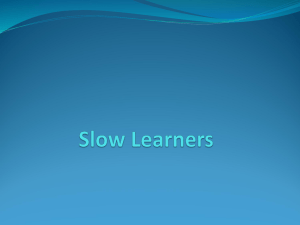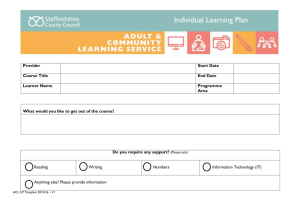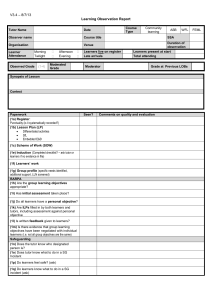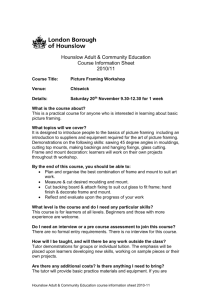Hot Topic 7 - Aims and Outcomes
advertisement
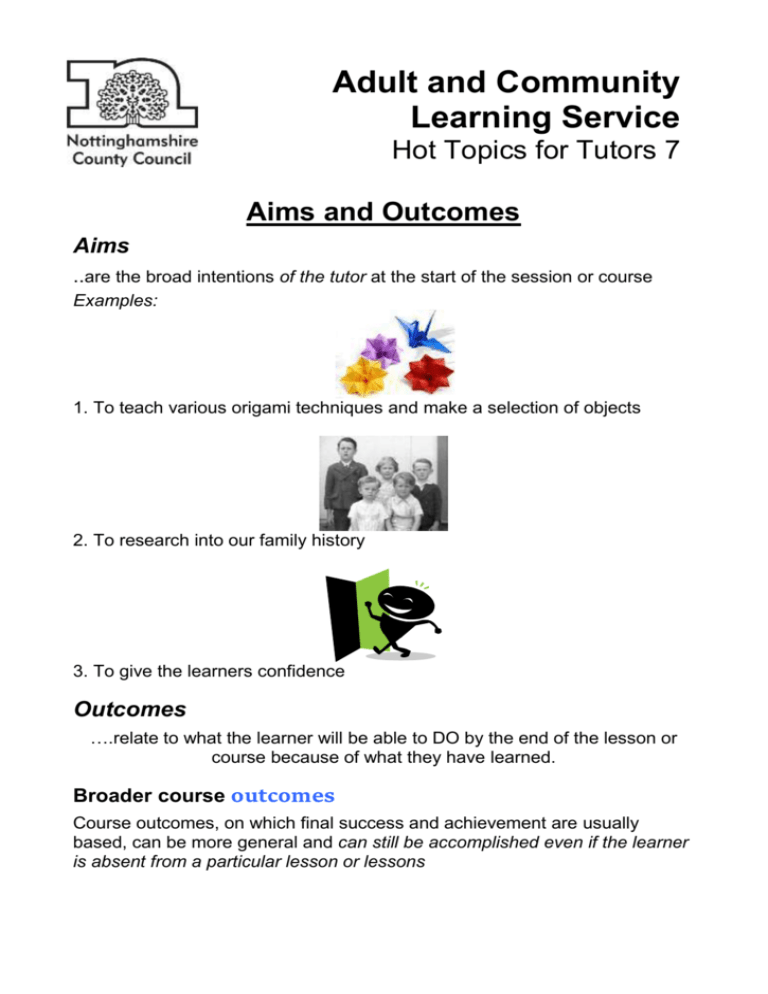
Adult and Community Learning Service Hot Topics for Tutors 7 Aims and Outcomes Aims ..are the broad intentions of the tutor at the start of the session or course Examples: 1. To teach various origami techniques and make a selection of objects 2. To research into our family history 3. To give the learners confidence Outcomes ….relate to what the learner will be able to DO by the end of the lesson or course because of what they have learned. Broader course outcomes Course outcomes, on which final success and achievement are usually based, can be more general and can still be accomplished even if the learner is absent from a particular lesson or lessons In this example, the tutor has designed broad course outcomes giving the learner plenty of chances to achieve them even if they are absent for a couple of weeks The learner will (be able to): 1. Create a range of objects applying recognised origami techniques 2. Research a variety of sources to discover new information about their ancestors’ history 3. Use identified communication skills to present some information to the group Tip: Note that verbs like ‘learn’ or ‘understand’ are avoided as the tutor cannot see or hear people ‘learning’ and ‘understanding’ – it is what the learner can DO with their learning or understanding that can be more easily assessed Narrower lesson or differentiated Outcomes Narrower, more detailed outcomes can be used for specific lessons and for differentiating The following examples are from individual lessons Learners will (be able to) 1. Produce a bird, accurately applying the three main paper folding techniques 2. Describe five suitable sources of family history, stating why they are important 3. Read out their favourite poem using identified presentation and communication skills with competence In the next example, the learners in the origami class have a wide range of ability, some with learning difficulties through to experienced learners, so the tutor has decided that there needs to be numerous differentiated course outcomes to cater for them all. In this case the general course outcome is: Create a range of objects applying recognised origami techniques some will fold paper to change its shape, with support if needed some will make very simple objects with support some will make simple objects with basic folding techniques some will make medium complexity objects some will make advanced complexity objects some will make objects of their own invention Not only does this cover all the abilities in the group, it gives a sense of how the learner can progress in the class which can really help with planning. These differentiated criteria can be adapted to relate to course or lesson outcomes And another thing…. Success and achievement do not have to be based on learners satisfying outside criteria. The tutor plots at what levels the learners start on the course based on initial assessment, and helps them to a place of increased skill, knowledge or understanding. Designed soundly, the only reason an outcome would not be achieved is because of very low class attendance, too low even for the learner to achieve generalised course outcomes Where to pitch outcomes Outcomes should be pitched in the learners’ ‘do-able but demanding’ zone, to ensure they are not learning something they already know but at the same time the learning is not so hard they might fail. Good initial assessment is crucial to gauge their starting point accurately It’s OK to ask! For more information or guidance on this “Hot Topic” please contact: Julie Dye on 0115 9773082 or email: julie.dye@nottscc.gov.uk







